Many call figure skating a sissy sport, a feminine thing. To the contrary, and to my unrelenting irritation, it is a very gender-inclusive sport, a sport of both sexes, a sport where men must be men and women must be, well, girls.
Consider the costumes. The men usually wear ordinary long pants and a more or less ordinary shirt. The women, on the other hand, with such consistency I suspect an actual rule, show their legs–their whole legs–and almost as much of their upper body as they can get away with. And they always wear that cutesy short little girl skirt. What is it with that? Or they wear a negligée. (Ah. It’s the standard turn-on for sick men: sexy – child.) (Why is child sexy to men? Because child guarantees power over. And that’s what sex is to men–power, not pleasure. Or rather, the power is the pleasure. Probably because they don’t recognize the responsibility of power.) (So even in a sport without frequent legs-wide-apart positions, the woman’s costume would be questionable. But I believe it’s actually a rule–the female skaters must show leg. Like most rules women are expected to follow, this one surely was made by men, for men. As if women exist for men’s viewing pleasure.)
(Too, no doubt there’s some compensation going on: the stronger women get, the more feminine (i.e., the weaker) they’re told to be. Men can’t accept women’s superior fitness, physical ability, endurance, and agility; so the women are encouraged to compensate by being child (I’m really young, small, and no threat) and by being sexy (I’ll still please you).)
In no other sport–I think of track, basketball, volleyball–do the men and women wear such different outfits. And in fact, not even in figure skating, at least not in practice, do they wear such different outfits: most skaters, whatever their sex, wear some sort of spandex bodysuit, perhaps with sweats, when they work on the ice. You can’t tell them apart then: there’s no difference in speed, in line, in movement. (Ah. That’s the problem: that we won’t be able to tell them apart. Men define themselves as not-women; the greater the difference, the stronger their identity.) (And yet, as one male student of mine once explained, ‘It’s natural to pick a fight with whatever’s different.’ Men are so confused.) (Then again, maybe not–maybe they just like to fight. Hence the need to ensure there’s always something different nearby.) (Men are so confused.)*
Consider, too, ‘the pairs’. Always male and female. There are same-sex pairs in other sports (for example, tennis)–why the obsession with mixed-sex pairs in figure skating?
And yes, there are mixed doubles in other sports, but only in this one is the strong boy–weak girl thing so prevalent, only in this one does the man routinely (seem to) support the woman: he is the subject who throws, pulls, pushes, lifts, and carries her, the object. It’s the perfect metaphor for our deluded masculist world: the man lifts the woman, displaying his strength as he puts her on a pedestal. Deluded, because, of course, the woman, despite her incredible physical strength and skill, appears to be a mere object moved by the man when, in fact, the success of the move depends as much on her: her strength, her balance, her timing.
Why aren’t they called ‘aerial balances’ instead of ‘lifts’? Or better yet, more fair, ‘lifted balances’? The very name describes only what the man does. As if the woman does nothing, is completely passive. You just try holding your body horizontal in mid-air and see how much sheer strength it takes, along with amazing balance. Go ahead: climb a tree; now hang over a branch; okay, now straighten your body and hold it; now, add a couple pounds of skate to one end; and now lift both ends not just even with the branch but higher than the branch, that’s it, arch; okay now let’s make the tree move; now smile.
And now get down. But you can’t just jump down. You have to land in the man’s arms. Without slicing his balls off with your blades. That takes some skill. (And yeah, okay, some concern.)
And why aren’t they called ‘throwns’ instead of ‘throws’? Or better yet, more active, ‘soars’? Contrary to popular belief, the woman doesn’t need the man to throw her high into the air in order to do a couple twists before she lands. The side-by-side triple jumps show that she is quite capable of throwing herself. And, in fact, wouldn’t it be harder to land when you’ve been thrown by someone else?
The answer to this question about the names is that figure skating, like so much else, is defined by men. The quad is deemed to be the most difficult move; it is the benchmark of superior ability; it is more noteworthy than a spin or a spiral. This is not surprising. The quad is a short-burst feat of speed and strength. These are male obsessions. Perhaps because they are easily mastered by the male body. The spin, less lauded, is a feat of balance (as well as speed and strength). And more easily mastered by the female body. (Unless of course, if you’re Surya Bonaly–she can do both a quad and a spin.) (Sometimes even while wearing a cute little skirt.) The spiral, less lauded still, a feat of flexibility (as well as balance and strength). The quad covers more ground, conquers more territory. The spin stays in one place. The spiral also covers a lot of ground, more, in fact, than the quad, but it’s static, and beautiful, and is therefore demoted. The quad is also subject to quantification–it’s more than a triple. The spin is also subject to quantification, more, in fact, than the quad, but as I said, it stays in one spot, and it’s very small. That there is more comment about women not doing quads (or rather, more presumption that because they can do only triples, they’re not as good as the men) than there is about men not doing the Biellmann spin, a difficult cross between a spin and a spiral (let alone the presumption that they’re not as good as the women because they can’t do it) indicates that the measure of ability, the standard, the norm of reference in figure skating, is male.
Consider the fact that women leave the sport (or have to re-learn it) once they reach puberty–i.e., once they actually develop female bodies. As is the case with gymnastics. And track. There have got to be moves that a woman’s body can do, for which hips and breasts and a certain amount of body fat aren’t debilitating. Why haven’t we made sports out of those? Well, we have. But the media, and society, in which men call the shots, don’t put a lot of attention, time, energy, or money into distance swimming. (There, our fat is good–the buoyancy makes it easier. There, our anaerobic superiority is good–we last longer, we finish.) Or synchronized swimming. (Which men simply couldn’t do.) (Or at least couldn’t do very well.) (Or, most importantly, couldn’t do better than women. They don’t have that anaerobic efficiency. They’d drown. And they certainly couldn’t get their legs very high out of the water–what with their poor buoyancy and their top heaviness, they’d be, well, pathetic. And few–only the young ones, the boys–could split them to the horizontal. And anyway, that complete relinquishing of the ego–absolutely no grandstanding, no upstaging, allowed–and that continuous adjustment which requires a sensitivity to others, is beyond them.)
Perhaps the polarization, in costume as well as in movement, is perpetuated not by men in general, but by insecure men who are reacting to the ‘real men don’t figure skate’ view. So they emphasize a ‘masculine’ physicality.
There are, of course, thankfully, exceptions. The “Marbles” piece of Gary Beacom and Gia Guddat is one example: skating on their hands as well as their feet, in identical striped three-quarter bodysuits, they emphasize not sex, but technique and humour. The Duchesnays provide another example: in one piece, they each wear the same simple blue pants-and-shirt outfit, and the choreography has no heterosexual romantic undertone whatsoever, they are simply two skaters on the ice, each as apt to support the other; the piece is about, again not sex, but art and athletics.
* This need to differentiate would explain the prevalence of the military theme, the warrior figure, in the men’s solos: I’m not a sissy, I’m a real man, I’m physically strong and emotionally flat, I like to fight. (And kill. So it suddenly occurred to me, when I happened to watch a figure skating competition right after a newscast during the Serbia/Croatia ‘conflict’, what poor taste it was–to act out on the ice killing someone, with such pride, such celebration. Especially if there’s a nationalistic edge to the performance, as there often is because of the accompanying music.) (Well, duh. Of course. From toy guns to ‘action’ movies, it’s not just poor taste, it’s sick–to portray, and to consider, hurting and killing as entertaining.)
Consider too the male habit of thrusting (!) his fist into the air after a successful performance (in any sport), showing this unsettling association of victory with violence, pleasure with power.









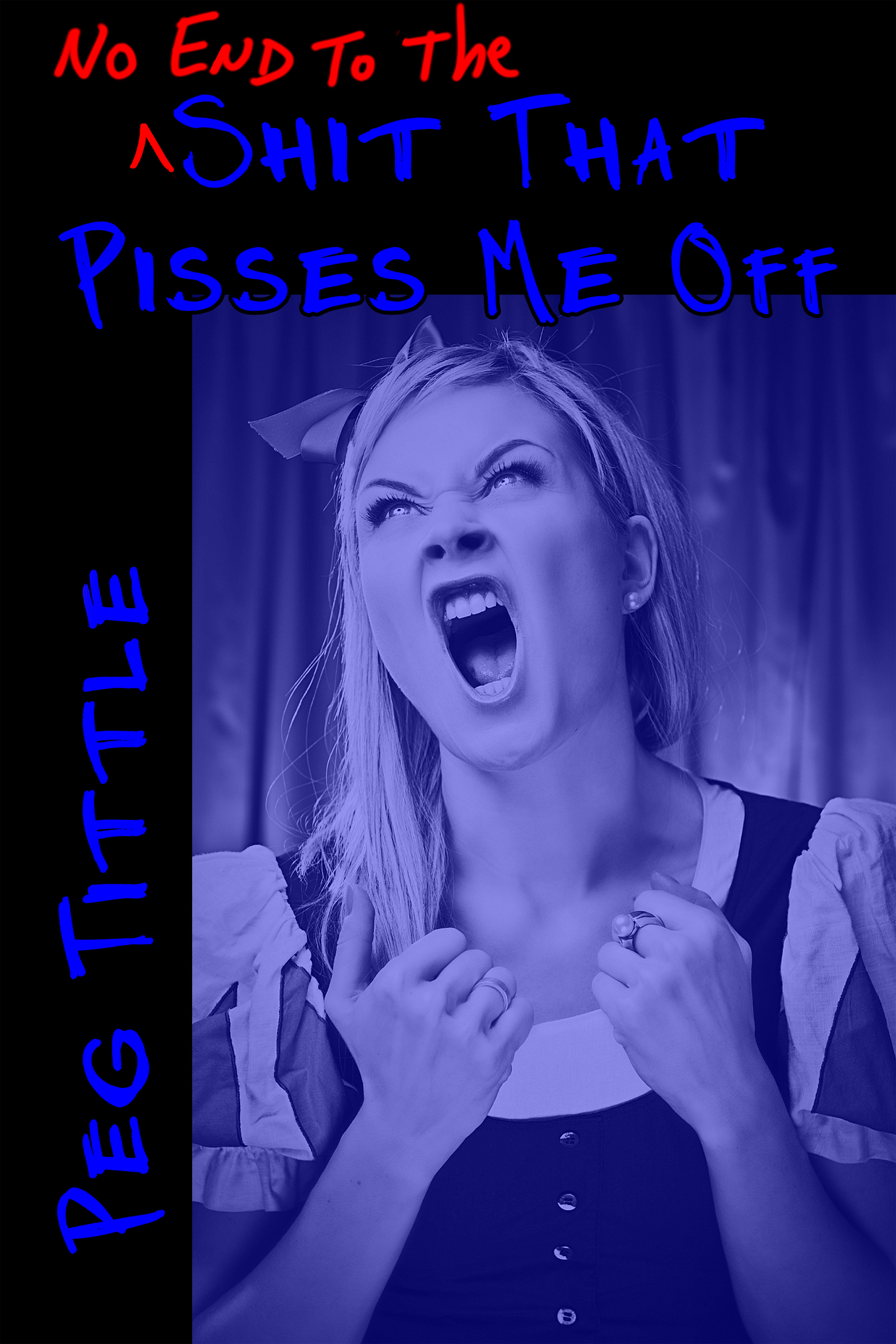
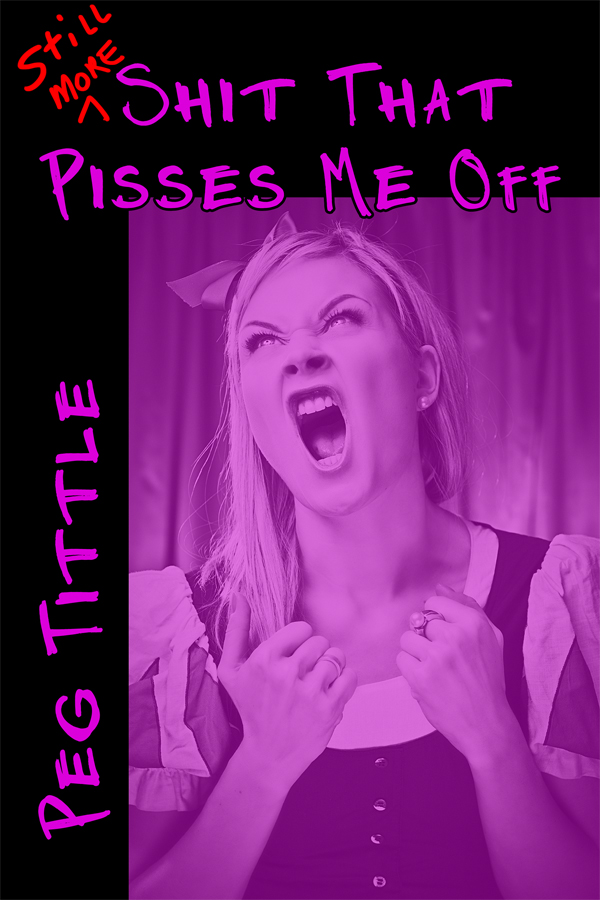
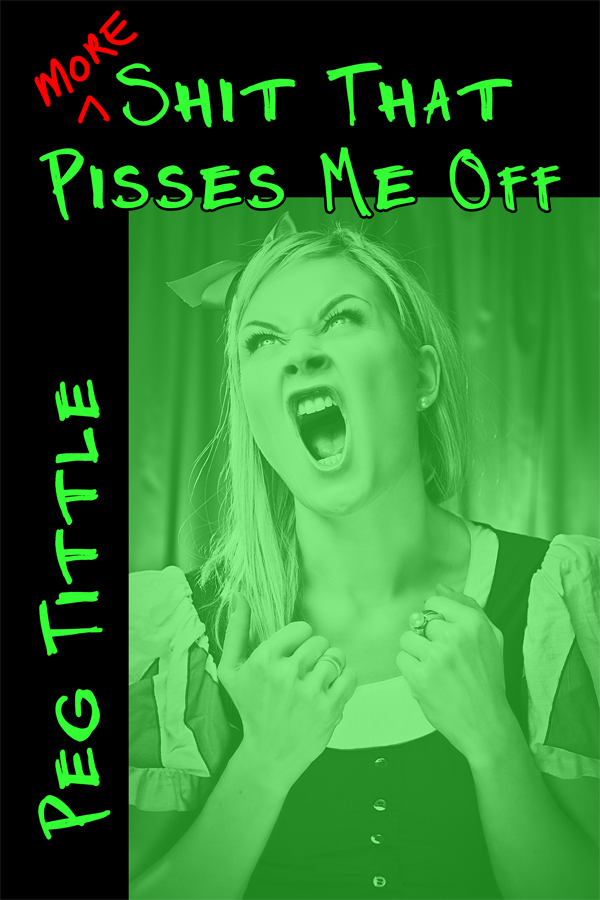
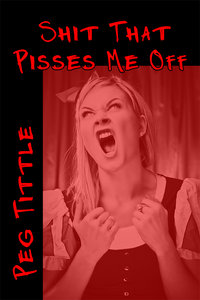

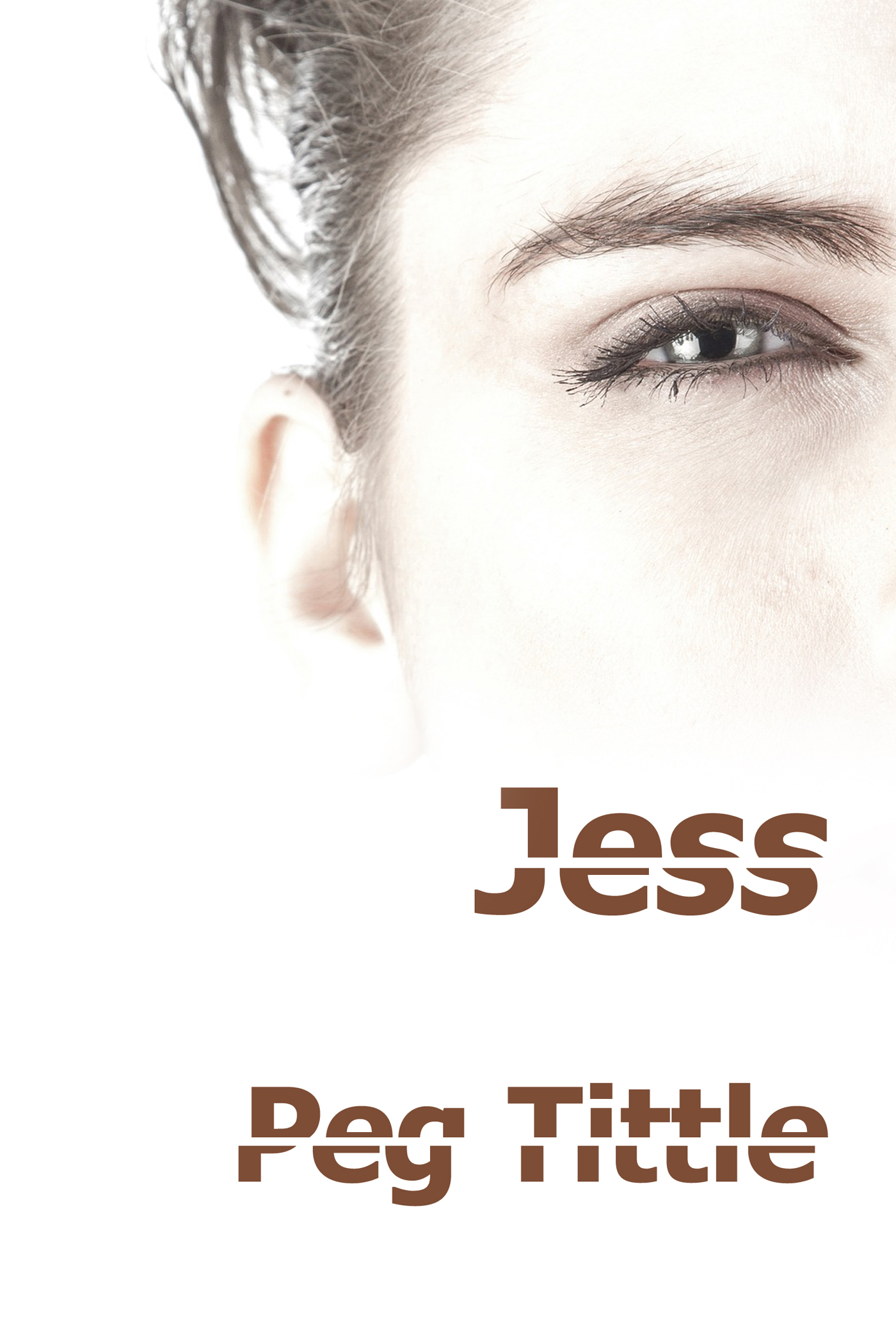





5 comments
Skip to comment form
i read that piece from top to bottom, peg, and not just to see what you said about me after noticing it on google alert, and also not because i met you many many years ago, but because it was a really interesting and novel perspective. you made some excellent points and expressed them well. so, thanks.
These are some good points you bring up in this article. I am currently reading a book about figure skating and the Olympics. The skaters just get younger and younger and they delay menstruation so they don’t achieve a woman’s body. I cannot a support a sport that borders if not crosses the line on child abuse. Sexism, unfortunately, is prevalent in sports, usually considered a man’s domain. It is very unfortunate.
This is such an insightful piece. As a skater, coach, writer and feminist, I have grappled with many of these issues. Despite the skimpy costumes, the compromising positions, and the nomenclature, not to mention the risk of injury, I have found that figure skating can be very empowering for girls and young women. There is nothing like skating fast, landing a jump, hearing ovation, and receiving high scores. Likewise, I can attest to the fact that there is an uncommon thrill in supporting your own weight up in the air in a lift a.k.a. arial balance (I like your term). The rink is a place where being both strong and feminine is celebrated simultaneously. Note that it is one of the few sports where the “stars” and “legends” tend to be women – Dorothy Hamill, Peggy Fleming, Michelle Kwan, etc. Of course there are also male stars but it is a rare place where women (okay, and now girls, this has mostly to do with physics) outshine and outearn men…I suppose you could argue that the popularity is a result of the sexualization of young girls …but I think there is a lot more to it than that. Alongside all the sparkle, there is a great deal of tenacity displayed during any competition – it is wonderful to see this depicted on television and I think this is why both men and women tune in.
Thank you for referencing the Duchesnays – one of my favorite skating teams (note that I did not write “couples”) – I always admired their androgynous, more athletic style.
Hi,
I like your article. I’m a dress designer. If you are looking for a Custom Ice Skating dress please visit my site http://www.ZhannaKens.com, I know you’ll be pleased 😉
Best Regards,
Zhanna Kens
While I respect you opinion… did you even talk to a figure skater? Did you do any research (beyond a quick google) into figure skating?
You mention that there are only male and female pairs… not true. US figure skating offers same sex partners to compete with each other(most do it in artistic). You also mention that people leave the sport after they develop. Again this is not true. Adult figure skating is a fiercely competitive group of skaters ranging from 21 years old to people into their sixties (maybe even seventies). You may ask why you do not see these skaters competing at the olympic level… Simply put their bodies cannot handle it. At 23 I have had knee surgery, shoulder surgery, and broken my leg. While all of my injuries may not have been caused by skating; skating definitely exacerbated them.
As to the skating dresses the short skirts do serve a purpose. If you have ever tried to spin in a long skirt you will quickly find out that it is much more difficult to do. The centripetal force pulls the skirt out and up, your arms get tangled in it or it tangles around you. If the skirt is uneven and long it will cause your center of balance to be affected. While skating in a longer skirt your blade can get caught in the skirt while doing certain moves (remember skaters BEND… and therefore the skirt will get closer to the ice).So why not pants? Many skaters wear pants to practice in because they are comfortable, but they often cause similar problems as the long skirts. If the pants are loose blades get caught. If the pants are tight they tend to be more revealing than the skating dresses. Pants also don’t seem to hold up as well over time (often due to blades getting caught on them). Blades cut and it is far cheaper to replace tights than pants. Anyway I end up feeling prettier in a skating dress than pants (this may be a personal preference). If I feel prettier and more attractive I feel better about myself and I skate better.
As to male jumps verses female spins and moves. Yes men tend to jump more, higher, and faster. They are not as flexible (generally) as women and therefore cannot do moves that women typically do. I have never seen a male skater look down on a female skater for not being able to do a quad (which women are actually work on now). In addition to this I do no know a single female skater who expects males to do an extremely low sit spin or an exceptionally high spiral. Men and women ARE built differently. The skating world accepts this. Men are not judged at the same standard as women and vise versa. Would you judge a woman in the WMBA just because she couldn’t dunk? How often in gymnastics do you see men working on the beam? In skating a good spin can make up for a quad… a quad can make up for a good spin.
I really believe that skating in general makes for good, independent women. If you wonder go and talk to some of the adult skaters at your local rink. It is unlikely that they will the size 2 barbie girl who only cares what other people think. She will be an educated, independent woman, who simply wants to do the sport that she loves. Much like Jocelyn states… this is one of the few sports that women can take the spotlight and I think that says a lot.